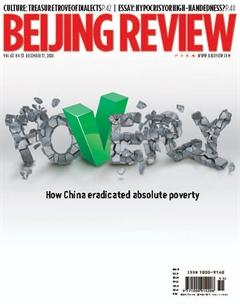How Can China Raise Its Total Fertility Rate?


According to the Ministry of Civil Affairs, Chinas total fertility rate (TFR) has fallen below the warning line as the countrys population development has hit a critical point. The birth rate on the Chinese mainland dropped to 10.48 per 1,000 people in 2019, the lowest in seven decades, according to the National Bureau of Statistics(NBS).
Keeping in line with international standards, a country needs a TFR of 2.1 to maintain a stable population. All this is taking place at a time when China has relaxed its family-planning policy.
This grim picture of Chinas population contraction has generated much buzz across Chinese society. Given that the relaxed family-planning policy has failed to reverse the decline of the birth rate in recent years, most people argue that the high cost of living as well as raising and educating a child should be blamed for young coupleslow interest in having two children. The matter is exacerbated by the lack of a universal baby care service network, deterring a lot of employed young couples from having more than one, or even just one, child.
Given the importance of population to a countrys economic growth, as well as its comprehensive national strength, many think it is high time for China to act to reverse the downward trend of its FTR.
A trend of view change
Zhu Changjun (China Business Journal): This is the first time it has been officially admitted that the TFR has fallen below the warning line. When demographers warned in 2015 that Chinas TFR of 1.4 was already much lower than the 2.1 necessary for the population to stay stable, and that China might fall into the trap of low fertility, the National Health Commissions response was that Chinas fertility rate was “not that shockingly low.” The striking contrast in official attitudes toward this issue reveals the top leaderships new understanding of Chinas population development.
Recent years have witnessed several policy adjustments to encourage reproduction, such as the universal two-child policy adopted in late 2015, an upgrade of the two-child policy for couples where either the husband or the wife is from a single-child family released several years earlier. Nevertheless, these modifications have thus far failed to fundamentally reverse the downward trend of the nations birth rate.
According to the NBS, the total number of Chinas newborns hit 14.65 million in 2019, a decrease of 580,000 babies compared with 2018.
What reproduction-encouraging policies will follow in the coming years and to what extent can they help to prop up Chinas population growth? This remains to be seen. Whatever may be the case, these policies must be hammered out based on full and scientifi c discussions to produce the expected effects.
Various factors are responsible for the minimal inclination to have babies among young Chinese, mainly the high costs of bringing up and educating children, on top of high living costs.
The lowered birth rate is a global trend, but in China the fertility rate is swayed by national policies. This is also the first and foremost reason that the Chinese people began to reduce childbirth.
Years of implementation of the familyplanning policy meant to restrict population growth has become so entrenched in the mindset that a large population now equates having children with burdens and pressures. Despite positive tweaks in recent years in policies and specific measures, we are still far away from a society where population growth and social development derive from an objective perspective.
He Yafu (The Beijing News): Chinas birth rate kept falling from 2017 to 2019, with the 2020 data still unavailable. This trend is set to continue due to the shrinking number of women of childbearing age and the waning effect of the two-child policy. As a result, a negative population growth will soon occur. Once the population begins to contract, there is little chance of reversing the trend, because to turn around the situation, the FTR must reach 2.1 or higher. Given what is happening in the Republic of Korea and Japan, despite encouraging policies, its not an easy feat to boost the rate to even 1.5.
In this context, policy suggestions put forward in the 14th Five-Year Plan (2021-25) proposal to make the family-planning policy more inclusive and to cut the costs of childbearing and child care are timely. To make family planning more inclusive means China will continue to relax birth restrictions and society will become more tolerant to babies born out of wedlock.
To lower the cost of raising children requires universal childcare service for children under the age of 3, so that couples busy with work and pursuing a career will dare to have more children. Tax relief for families with two or more children could also help ease fi nancial burdens and encourage more families to have more children.
Its necessary to calculate the birth rate against the broad backdrop of demographic dividends, an aging society and various social issues that might stem from population contraction.

Stronger support
Tao Feng (Beijing Business Today): When the TFR drops below the warning line, it signals that Chinas population development has reached a critical point.
Some demographers predicted this result a decade ago, and warned about the huge impact of the low fertility rate of social and national development. However, across the Chinese society, there is much talk of the huge pressure of having babies and raising a child.
What is preventing the young from having babies? The blame for a declining TFR is pinned on many things, but the most striking obstacle to having a second child is the heavy economic pressures endured by most young people. They complain that they cant afford to buy houses or cars, let alone have a baby. Meanwhile, new attitudes toward life among the young are also challenging the traditional idea that one must get married and have a child.
Demographic dividends have played a crucial role in Chinas economic take-off in the past three decades. The year 2019 is the fourth year since the adoption of the two-child policy, but birth rates nonetheless continued to fall for three consecutive years. The low birth rate may become a stumbling block to Chinas social and economic development in the near future.
The contraction of the working-age population will make it more diffi cult to support the elderly. Limited input is stretching Chinas pension funds. Tens of millions of single-child families are struggling to support older people from couples respective original families. Chinese society is under the double pressure of aging and a low TFR.
Wang Peian (Peoples Daily): Population growth is crucial for a nation to develop. As far as population is concerned, it is not “the more the better,” or “the less the better.”There should be a balance between population growth and social development. A TFR lingering below the warning line bodes ill for society, and deserves much more attention.
While its important to put into real practice the two-child policy, its equally important to adjust social supportive policies and services. A lot of couples complain that no one is there to take care of their babies while they must work to support their families. The cost of raising even one child today is eye-watering, let alone adding a second child.

Consequently, if the country really intends to encourage the young to have more children, it is necessary to improve and expand baby-care services, catering to families at different income levels. There should be subsidies, tax relief and rewards for families, supplemented by longer maternity leave.
Meanwhile, women must not be discriminated against in the company or organizational recruitment process, so that they will not delay having a child or refuse to do so for fear of losing their jobs.
It is not simple to persuade people to have more children when they feel insecure or have questions about their own livelihood. Industrialization, modernization, a higher education level and professional participation rate among women, as well as higher human mobility, are the deeper reasons underlying Chinas tumbling birth rate. The current grave rate is the result of many factors, all of which need to be tackled.

